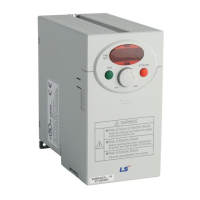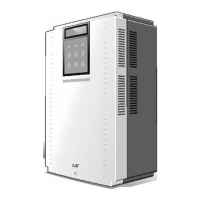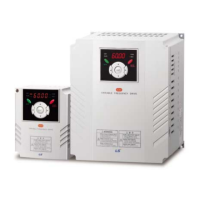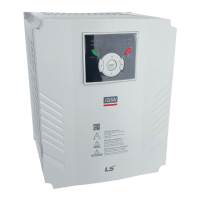Chapter 8. Troubleshooting and Maintenance
8. Troubleshooting and Maintenance
8.1 Protective Functions
When a fault occurs, the cause must be corrected before the fault can be cleared.
If protective function keeps active, the inverter should restart after clearing the
cause(s). Or, it may lead to reduction in product life and damage to the equipment.
Protection of Inverter output current and input voltage
Fault
display
Protective
function
Description
Overcurrent
The inverter turns off its output when the output current
of the inverter flows more than 200% of the inverter rated
Ground
fault current
The inverter turns off its output when a ground fault
occurs on the output as long as the function is active.
Ground
fault current
The inverter turns off its output when unbalanced output
current occurs due to abnormal situation such as ground
fault during run and one of U,V,W gets overcurrent.
Inverter
Overload
The inverter turns off its output when the output current
of the inverter flows more than the rated level (150% for
Overload
trip
The inverter turns off its output if the output current of the
inverter more than the motor rated current(P25) flows.
Inverter
overheat
The inverter turns off its output if the heat sink overheats
due to a damaged cooling fan.
Condenser
overload
Inverter output is blocked when one of 3 phases gets
opened or main condenser is outworn, resulting in
excessive DC voltage variation. Detection time varies
depending on inverter output current.
Output
Phase loss
The inverter turns off its output when the one or more of
the output (U, V, W) phase is open. The inverter detects
the output current to check the phase loss of the output.
Over
voltage
The inverter turns off its output if the DC voltage of the
main circuit increases higher than 400 V when the motor
decelerates. This fault can also occur due to a surge
voltage generated at the power supply system.
Low
voltage
The inverter turns off its output if the DC voltage is below
180V because of insufficient voltage input torque.
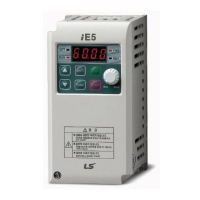
